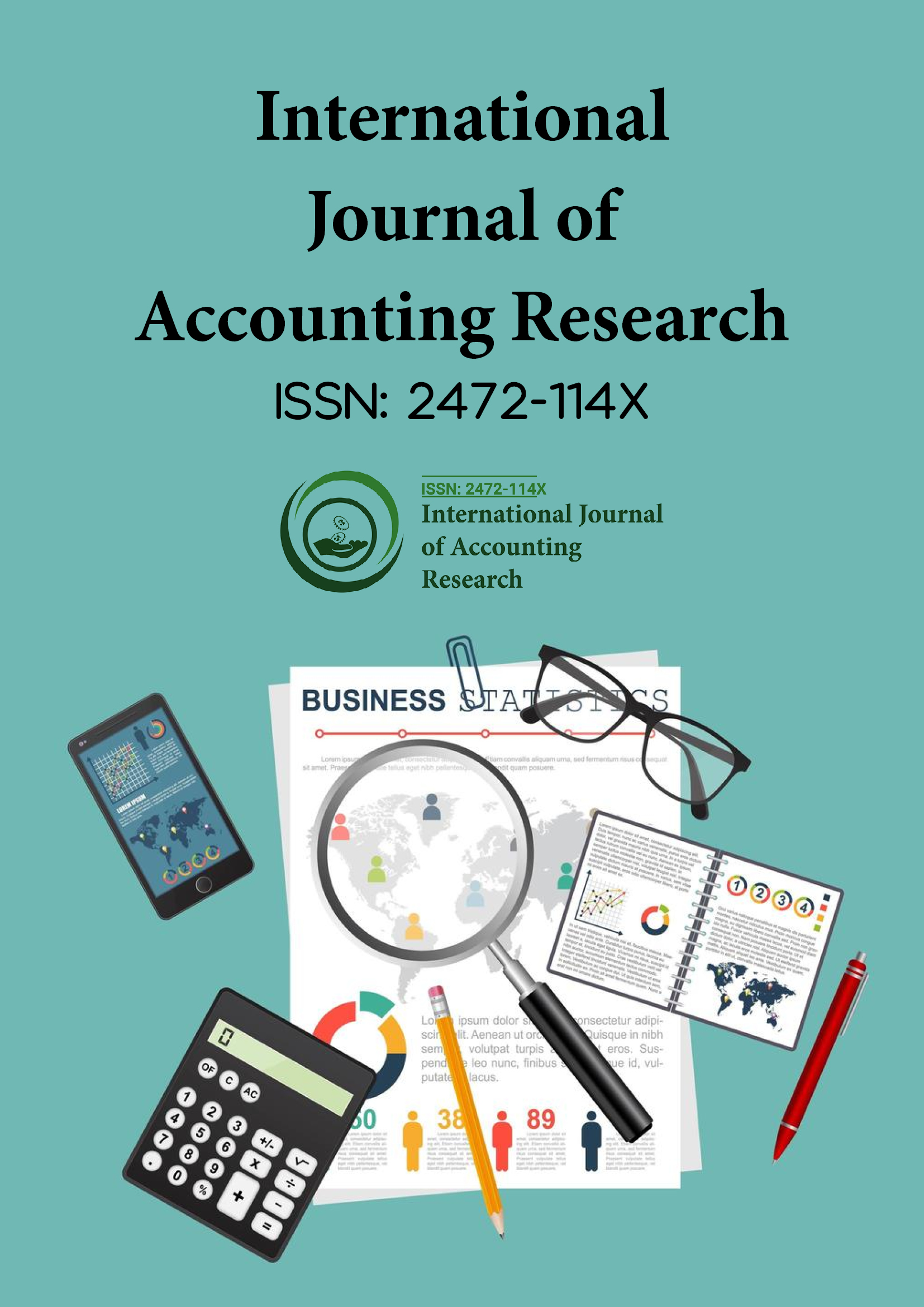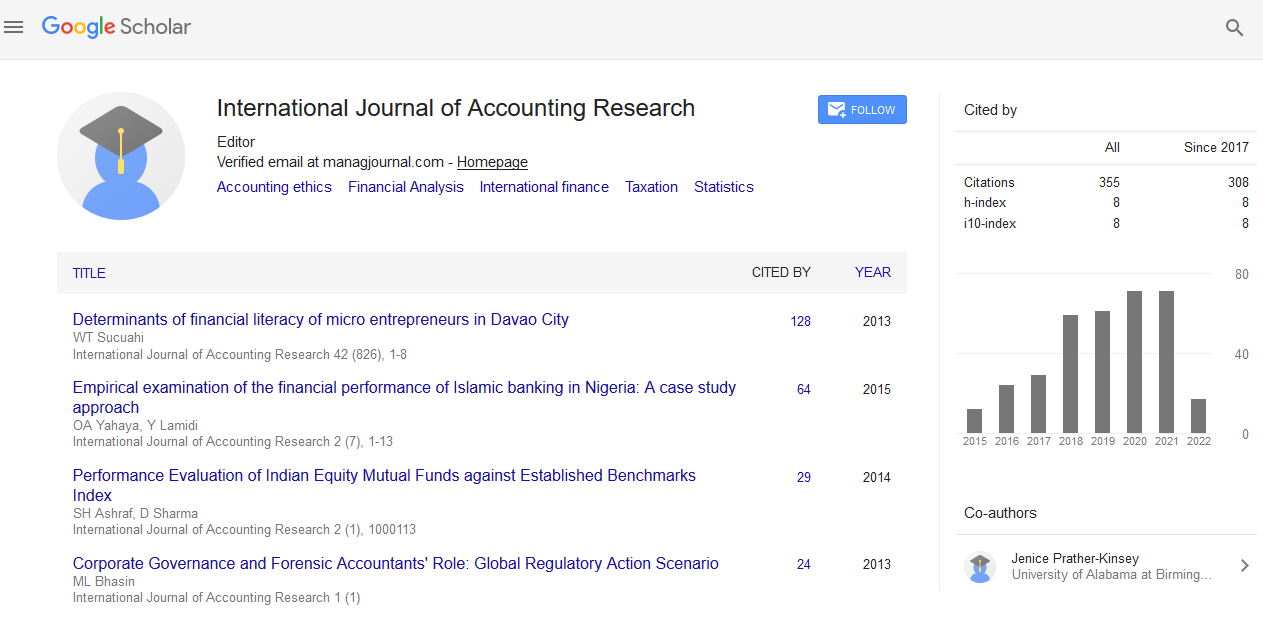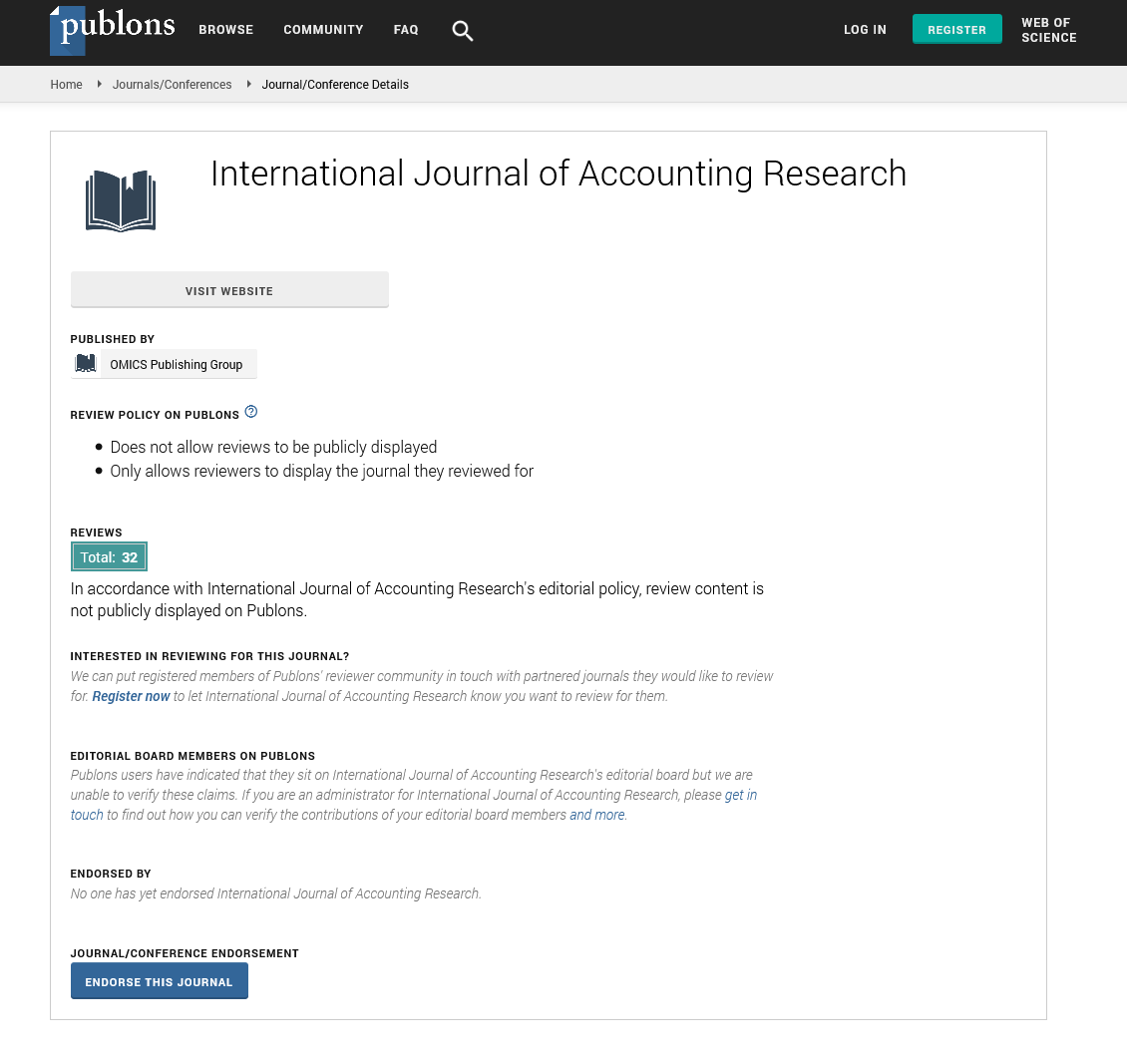Indexed In
- Open J Gate
- RefSeek
- Hamdard University
- EBSCO A-Z
- Scholarsteer
- Publons
- Euro Pub
- Google Scholar
Useful Links
Share This Page
Journal Flyer

Open Access Journals
- Agri and Aquaculture
- Biochemistry
- Bioinformatics & Systems Biology
- Business & Management
- Chemistry
- Clinical Sciences
- Engineering
- Food & Nutrition
- General Science
- Genetics & Molecular Biology
- Immunology & Microbiology
- Medical Sciences
- Neuroscience & Psychology
- Nursing & Health Care
- Pharmaceutical Sciences
Commentary - (2023) Volume 11, Issue 2
Risk Mitigation through Proactive Accounting Information Security Management
Zhen He*Received: 27-Mar-2023, Manuscript No. IJAR-23-21405; Editor assigned: 29-Mar-2023, Pre QC No. IJAR-23-21405 (PQ); Reviewed: 14-Apr-2023, QC No. IJAR-23-21405 ; Revised: 21-Apr-2023, Manuscript No. IJAR-23-21405 (R); Published: 28-Apr-2023, DOI: 10.35248/2472-114X.23.11.323
Description
Accounting Information Security Management (AISM) is a set of practices and procedures designed to protect an organization’s financial data and assets. AISM ensures that confidential financial information is kept secure, while also maintaining the integrity of the data. It is an essential component of any successful organization’s security strategy. The importance of AISM cannot be overstated. Financial data is one of the most valuable assets a company owns, and it must be safeguarded against unauthorized access or manipulation. AISM helps to ensure that only authorized personnel can view or modify financial records, and that any changes are tracked and audited. This helps to prevent fraud or other malicious activities from occurring within the organization. AISM also provides organizations with a way to detect potential security threats before they become a problem. By monitoring for unusual activity, organizations can identify potential risks and take steps to mitigate them before they become more serious issues. This proactive approach can help organizations save money by preventing costly data breaches or other security incidents from occurring in the first place. Finally, AISM ensures compliance with applicable laws and regulations related to financial data privacy and security. Organizations must adhere to strict standards when it comes to protecting customer information, which can result in heavy fines if not followed properly. By implementing an effective AISM program, organizations can ensure they are in compliance with all applicable laws while also protecting their customers’ sensitive financial data from being exposed or misused by malicious actors. In summary, accounting information security management is an essential part of any successful organization’s security strategy. It helps protect sensitive financial data from being exposed or misused by malicious actors, allows organizations to detect potential threats before they become major issues, and ensures compliance with applicable laws and regulations related to financial data privacy and security. In today's digital world, accounting information security management is becoming increasingly important. As the threats to financial data continue to evolve and become more sophisticated, organizations need to stay ahead of the curve and employ proactive strategies for mitigating risk. This article will provide an overview of some of the most effective risk mitigation strategies for accounting information security management. One of the most important aspects of ensuring data security is instituting strong authentication methods. This includes implementing 2-Factor Authentication (2FA), which requires users to provide two pieces of evidence that they are authorized to access a given system or database. Additionally, organizations should consider requiring strong passwords with a combination of letters, numbers, and special characters that must be changed on a regular basis. Another key element in maintaining data security is managing access privileges. Organizations should ensure that only those users who absolutely need access to certain sensitive information are able to do so. In addition, organizations should consider setting up user accounts with specific permission levels based on their roles within the organization. This will ensure that users cannot access data beyond their level of authorization and prevent unauthorized access to sensitive information. Organizations should also implement technical safeguards such as firewalls and encryption technologies to protect their networks from external threats. Firewalls act as a barrier between internal networks and external threats, while encryption technologies protect data from being compromised if it is intercepted by malicious actors during transmission or storage. Finally, organizations should have robust disaster recovery plans in place in case a breach does occur. These plans should include steps for quickly responding to the incident, restoring any lost data, and preventing similar incidents from occurring in the future. By having these plans in place before an incident occurs, organizations can minimize the damage caused by a breach and reduce its financial impact on the organization as well as its customers. By following these risk mitigation strategies for accounting information security management, organizations can ensure that their sensitive financial data remains secure even in an ever-changing digital landscape where threats are constantly evolving.
Citation: He Z (2023) Risk Mitigation through Proactive Accounting Information Security Management. Int J Account Res. 11:323.
Copyright: © 2023 He Z. This is an open-access article distributed under the terms of the Creative Commons Attribution License, which permits unrestricted use, distribution and reproduction in any medium, provided the original author and source are credited.


